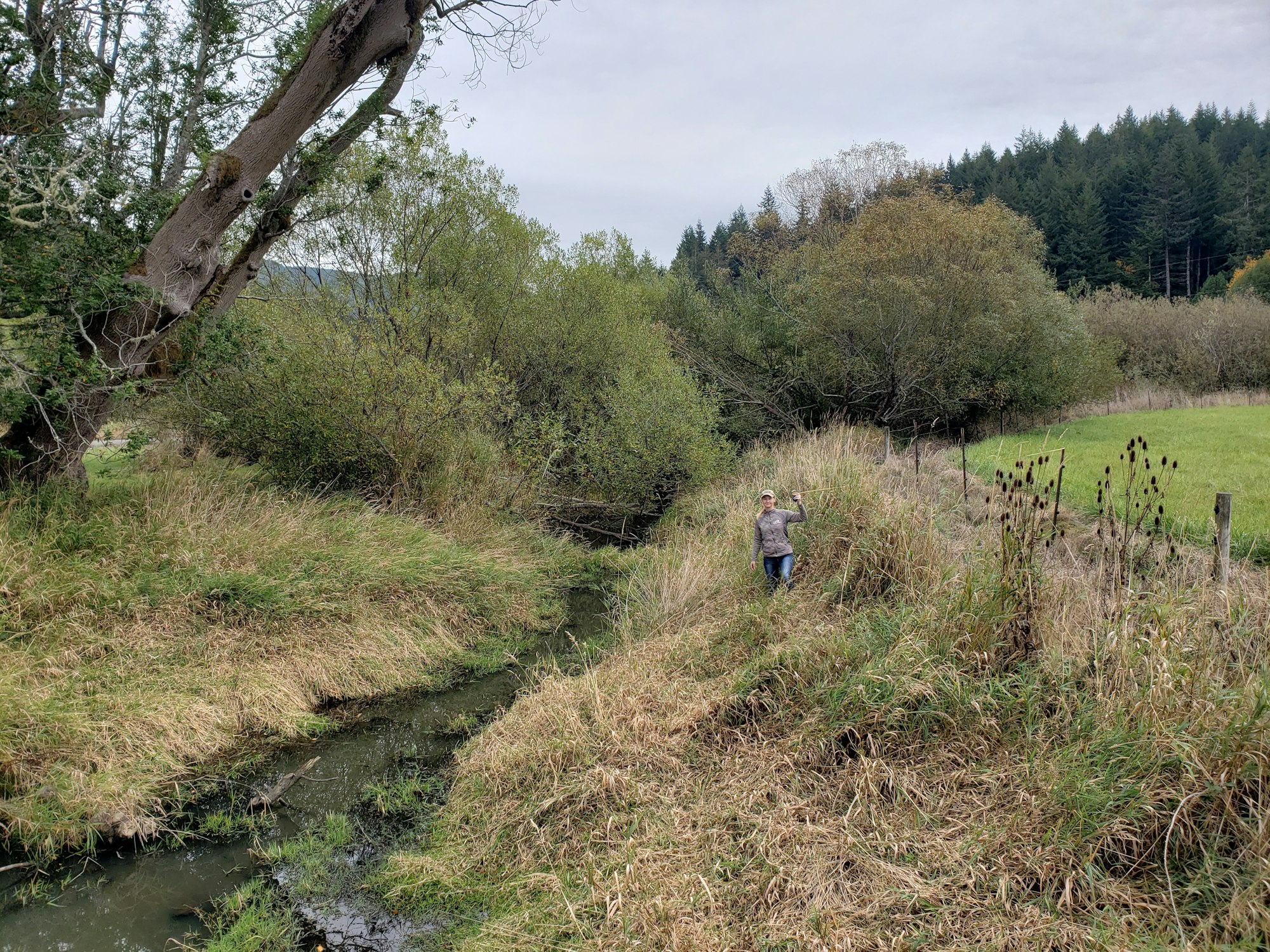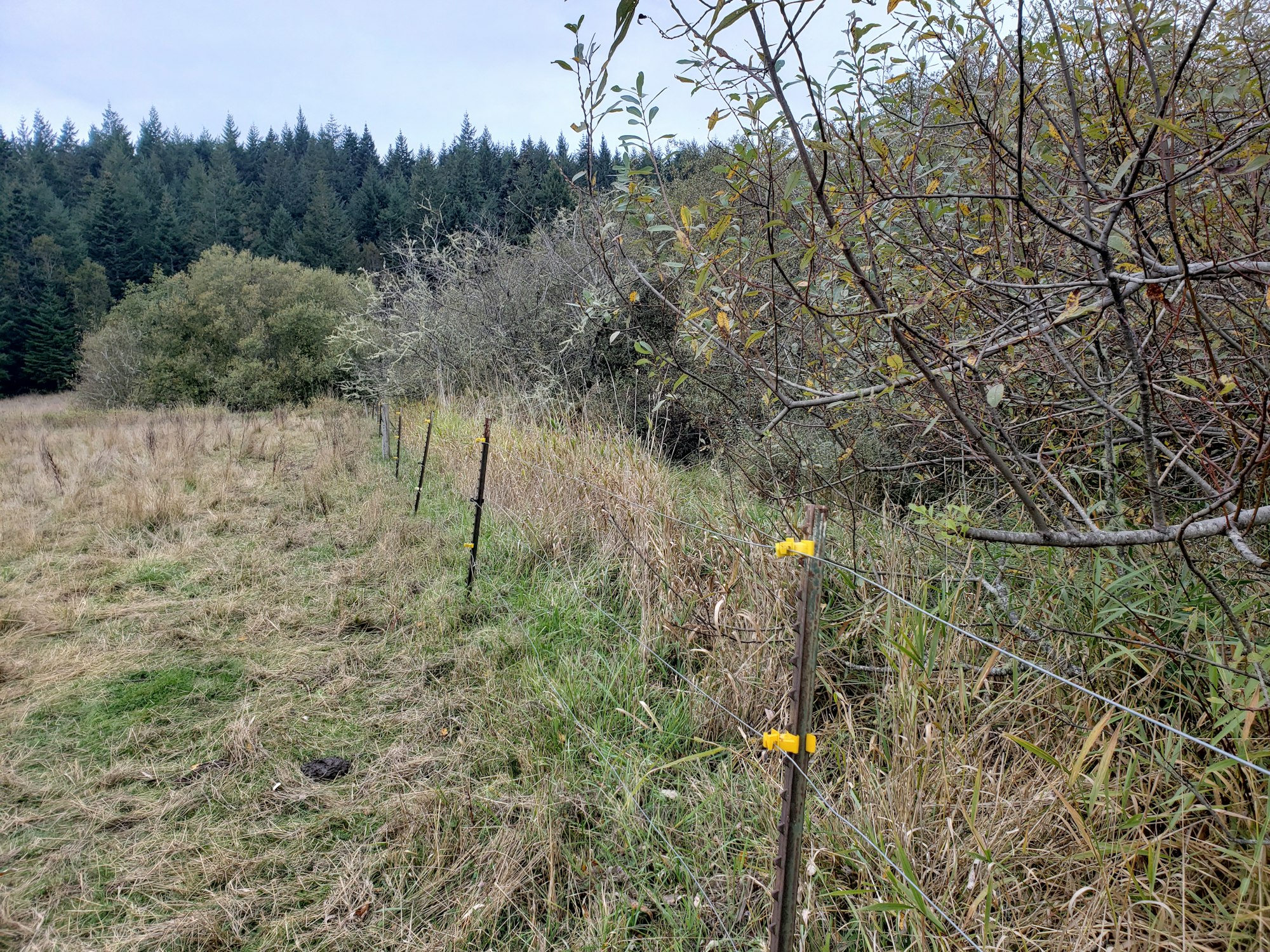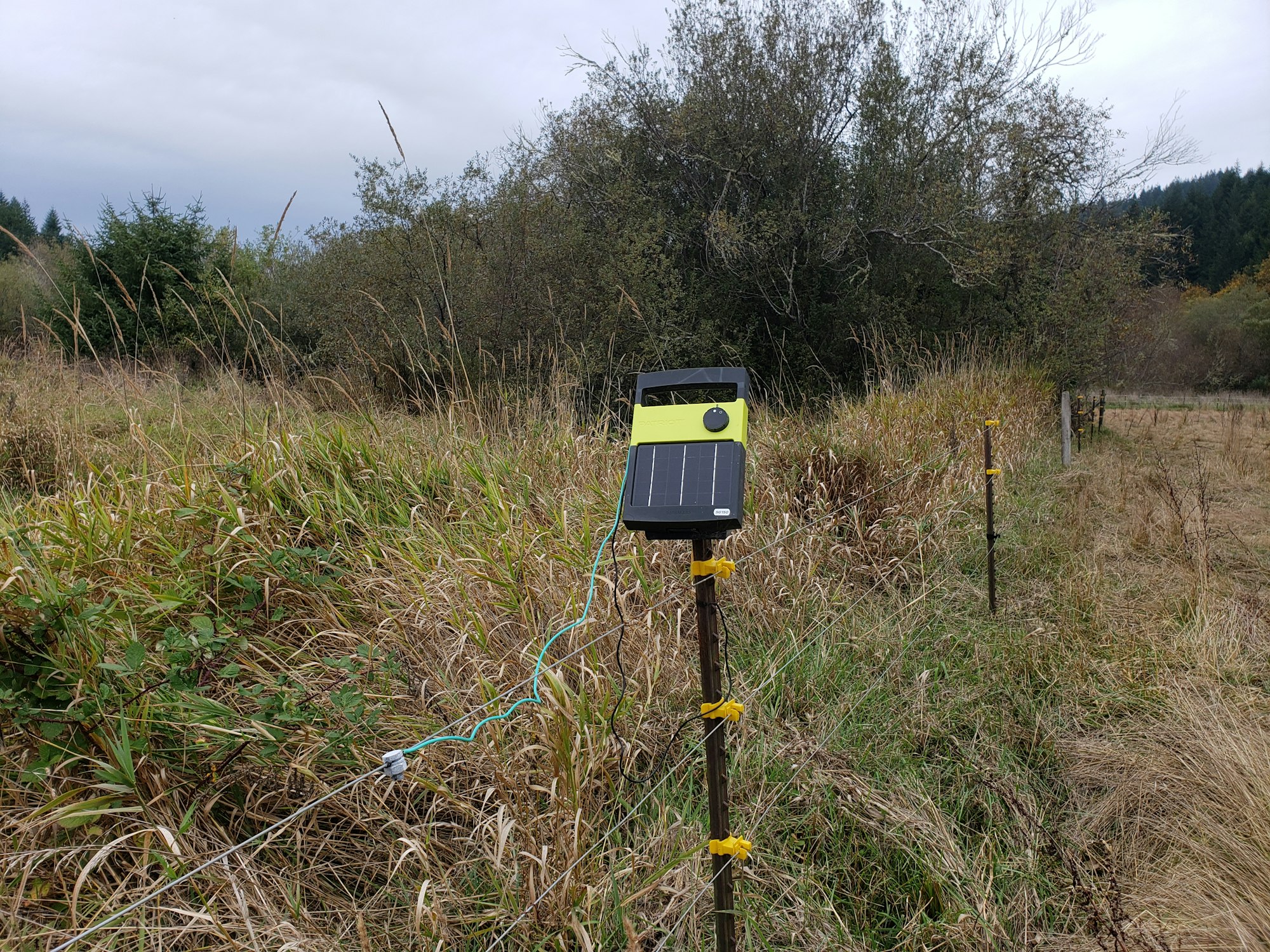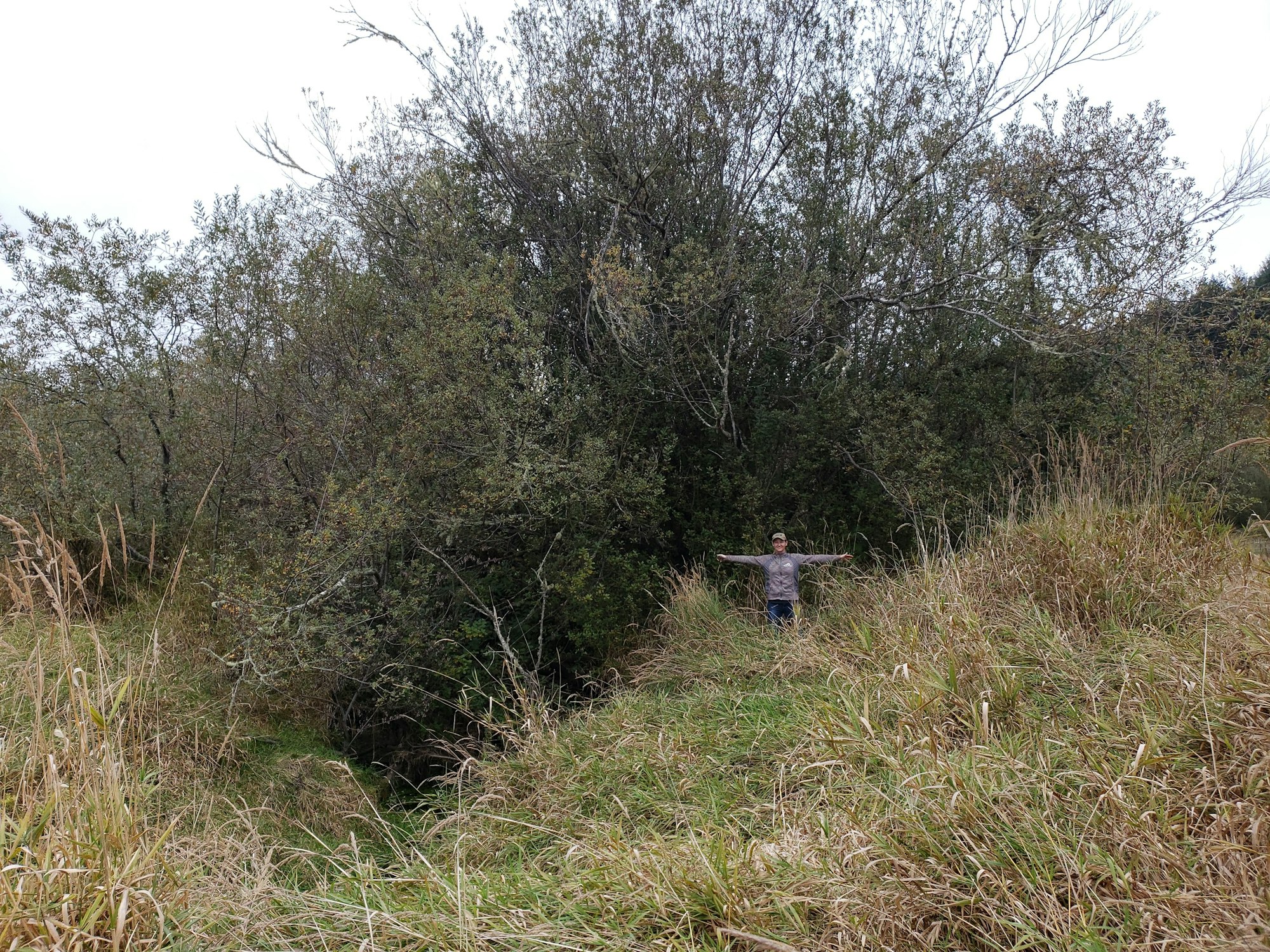Riparian Buffers on Agricultural Land
Riparian buffers on agricultural lands provide a vegetated strip alongside waterways. They are important for a few reasons. First, riparian buffers reduce erosion, especially if native plants with dense root systems are present. Less erosion means better water quality and less of your valuable soil washing away. Riparian buffers with healthy plants are effective at filtering bacteria, nutrients, and other common pollutants.
Riparian buffers create habitat for fish and wildlife. Also, if a fence is present, a riparian buffer can protect livestock from drowning or getting hypothermia.
The Oregon Department of Agriculture does not require a minimum buffer width. However, Coos SWCD recommends the following formula for calculating a buffer width on a waterway:
Recommended buffer width on each side of a waterway = 2 x Bank Height + 10ft
The bank height is the height from the water level during summer low flow to the top of the stream bank. For example, if a stream has banks that are 5 ft high, the recommended buffer width would be 20 ft on each side of the stream. We encourage you to calculate a buffer width for your waterway and pace it out on the ground to visualize what the distance would look like. A number that looks high on paper usually looks more reasonable when visualized on-site. A small buffer is better than no buffer. Even a 5-10ft wide strip of grass on each side of a stream or ditch can filter most bacteria from livestock waste. A wider buffer may be necessary at locations with active erosion, especially on the outside of a big stream bend.
If you have a waterway that runs through a pasture, fencing will be necessary to protect your riparian buffer from livestock. If you intend to build a riparian fence, a wider riparian buffer is better than a narrow buffer. A wider buffer will give the waterway a bit more wiggle room and protect your fence. Although riparian plants slow down erosion, all streams move at least a little bit over the years and a stream can easily undercut a fence with a narrow buffer.
Just like agricultural land, riparian buffers require active management. This is usually in the form of weed control. Growing large, overstory trees in your riparian buffer can shade out most blackberries and other weeds. However, occasional weed control will be necessary. Coos SWCD or your local Watershed Association can provide technical advice on how to manage riparian weeds. If you decide to fence your riparian buffer, ensure enough gates are installed to allow easy access inside the buffer for weed control and removing wayward livestock. A riparian fence is a big investment, and it will require occasional maintenance. Choose a style that will effectively stop your livestock and that will be reasonable for you to maintain. We encourage working with an SWCD or Watershed Association to design a riparian fence that works for you and your operation.
Recently, we monitored water temperature on a 1 mile section of a large stream that has a riparian buffer of 25ft on each bank. The buffer was planted about 20 years ago with willow and alder trees and fenced with electric fencing. The trees are now very tall and are shading the stream enough to keep the water cool enough for baby salmon and trout. We were excited to see that the water was much colder in this section of stream than in stream sections upstream or downstream that did not have nice riparian buffers. Seeing successful projects like this on the ground motivates us in the work that we do!










